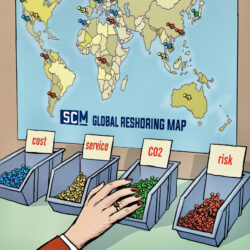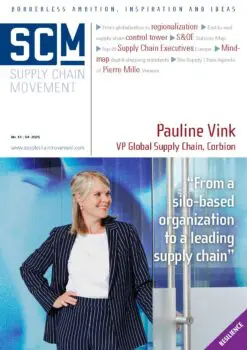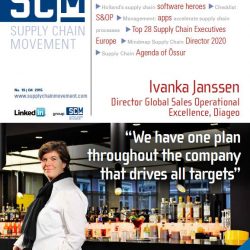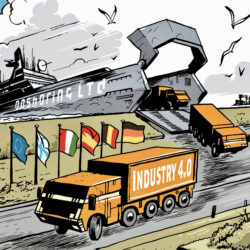Supply chain network design: from globalization to regionalization

The vulnerability of complex global supply chains has been a topic of conversation ever since the start of the COVID-19 pandemic. New research from BCI Global and Supply Chain Media shows that companies are not just talking about moving manufacturing capacity to their region, but are actually doing it. The main reasons are better resilience and agility, but sustainability also plays a role. One of the biggest challenges is to create the right ecosystem of suppliers.
Sandvik has no reason to relocate its production capacity to Europe. The vast majority of its production is already based in Europe (specifically Finland, Sweden and France), as too are the bulk (around 70%) of its suppliers. This is largely thanks to the Swedish roots of the company, which designs and builds autonomous and remote-controlled mining machines, among other things.
“Although manufacturing in the Far East is generally associated with lower labour costs, we’ve all heard stories about intellectual property and friction costs. At Sandvik, we supply the higher end of the market that greatly values innovation and quality. Here in Europe, we have that innovation and can guarantee that quality. We do have a factory in China, but its capacity is very limited,” says Robert van der Waal, who has been Vice President Supply Chain at Sandvik for the past two and a half years.
Because most of its production capacity is centred on Europe, Sandvik also has a lengthy and complex supply chain. After all, the vast majority of its machines are sold in other parts of the world. “Whereas we hardly have any mining activities in Europe anymore, 15% of Australia’s gross domestic product is still related to mining, and Asia, Africa and America are also important markets for us,” states Van der Waal. … … …
Want to read more?

Get your digital subscription of Supply Chain Movement No. 51 Q4, 2023 now! >>










